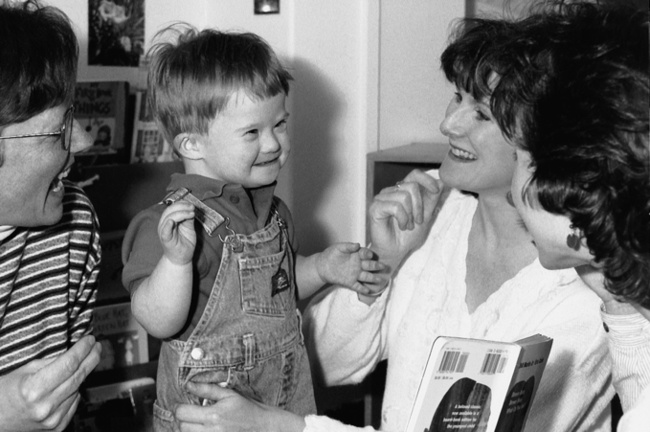2 PAMELA J. WINTON and ROBERT E. WINTON After studying this chapter, the reader will be able to accomplish the following: • Describe why it is important for an occupational therapy practitioner to have knowledge of and skills related to working with families. • Describe the differences between prescriptive and consultative professional roles. • Understand the way a therapy program for a child always has an impact on the family unit. • Describe the key concepts of family systems and life cycle theories and the roles of these concepts in interventions for children. • Recognize and appreciate that all families have unique ways of adapting and coping with life events and that effective therapy builds on these existing coping strategies. • Describe several communication strategies that an occupational therapy practitioner can use to promote familial–professional partnerships. As Heather leaves the apartment, she thinks about her relationship with the family and how it has developed during the 2 years she has been working with Margarita. At the beginning of the relationship, Heather was often frustrated by Mrs. Sanchez’s seeming disinterest in, or inability to follow through with, some of the home program ideas that Heather introduced. She had fretted and fumed but tried to help Mrs. Sanchez see the importance of taking Margarita’s needs seriously and devoting the necessary time to therapy. It was only after discussing the case with a colleague that Heather realized she had departed from the guidelines of the 2008 Occupational Therapy Practice Framework (OTPF).2 She had gotten caught up in her own expertise in the domain of OT and had strayed from a client-centered* consultative process. The vignette of Margarita and her family underscores the reason it is important for OT practitioners to understand family systems. Box 2-1 contains the key reasons for using a family-centered approach in early intervention when working with young children who have disabilities. The family-centered approach is also the focus of many current laws and health care delivery models. Public Law 99-457, which was passed in 1986 (IDEA, Part C), is considered revolutionary because of its emphasis on the central role a family plays in interventions with young children. This law and its subsequent interpretations have altered the way in which services for young children are planned and delivered. Some of the highlights of the early intervention component of the law include the following: (1) families are mandated co-leaders on state-level advisory boards that make recommendations about the way in which service systems are designed; (2) family concerns, resources, and priorities guide the development of individual intervention plans; (3) families play an important role in children’s assessments and evaluations; and (4) families have certain rights to confidentiality, record keeping, notification, and other procedures related to the programs and agencies that serve their children. The law ushered in additional changes that ultimately benefit families, such as promoting interdisciplinary and interagency collaboration. The importance of collaboration among agencies and disciplines became apparent when numerous stories surfaced about various health care professionals providing conflicting advice and recommendations to families with regard to their children with disabilities.6 Professional organizations, including the American Occupational Therapy Association (AOTA), have identified particular areas of competency and recommended certain guidelines to emphasize the importance of practitioners having the skills and knowledge necessary to work effectively with families.1 The dramatic changes in the relationship between families and professionals, which were catalyzed by Public Law 99-457, as well as the increased focus on the importance of families in all human service organizations did not develop overnight. The existing workforce has had to develop new collaboration and communication skills. University and community college training programs have had to retrain their faculties and upgrade their curricula in order to prepare students adequately for the newly defined pediatric roles (Box 2-2).3 Professional organizations have supported the changes by creating recommended practice guidelines and areas of competency. • Interdisciplinary and family-centered approaches are used when planning and implementing interventions. • Children who have disabilities are included in regular educational settings. • Therapists act as consultants, providing pediatric treatment that is integrated into the children’s regular routines and natural environments instead of using “pull out therapy”* (Figure 2-1). • Assessing family interests, priorities, and concerns • Observing and gathering information about the daily routines of children and families in their homes and in the classrooms • Gathering and sharing information with families about development and intervention strategies • Implementing therapy in collaboration with parents, caregivers, and general educators In addition to changes in laws, policies, and recommended practices, the demographic makeup of the children being served has also changed. Nearly half of the children in the United States under the age of 5 years are racial or ethnic minorities.5 In contrast, although the American population is becoming more diverse, the members of professional organizations such as AOTA and the American Speech and Hearing Association (ASHA) are predominantly Caucasian.1,4
Family systems
The importance of families
Current issues affecting occupational therapy practitioners and families
Changes in policies and service delivery models
Expansion of practitioners’ roles
Demographic changes in the american population
![]()
Stay updated, free articles. Join our Telegram channel

Full access? Get Clinical Tree


Family systems
Only gold members can continue reading. Log In or Register to continue

